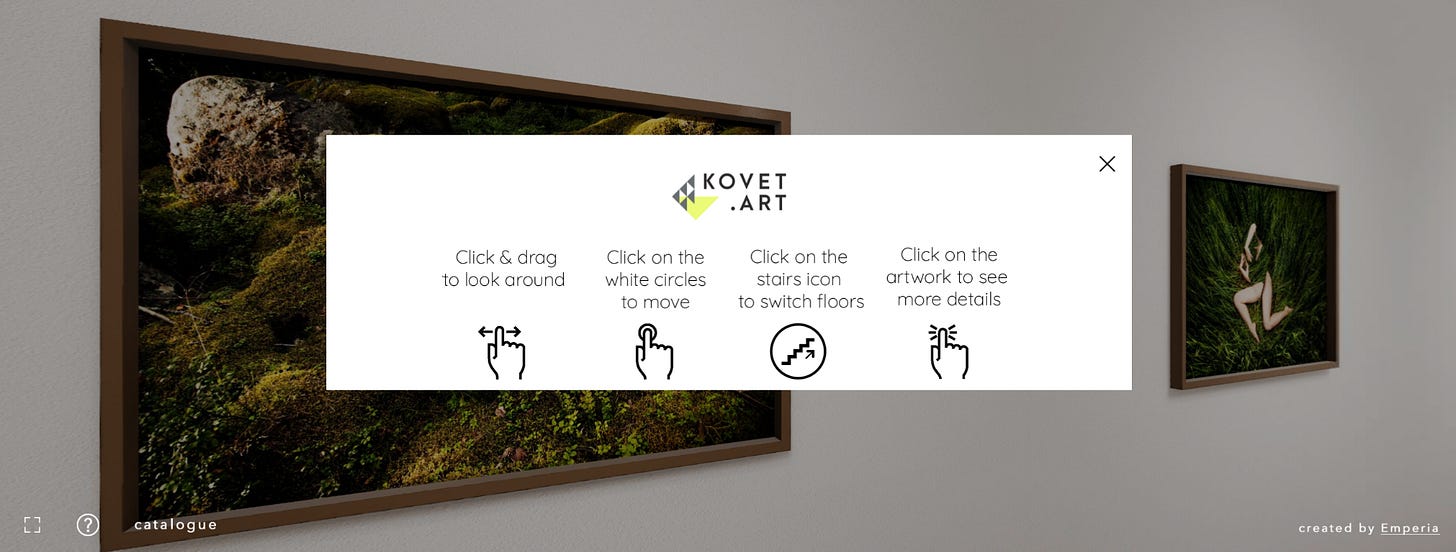The digital transformation is constantly evolving and changing the way we create, work, and live. New opportunities are constantly opening up and the future of storytelling is changing constantly. There is no doubt digital technology innovations have the power to continuously evolve our content creation process in the future.
In this article we’re looking at the most recent examples of companies adopting innovation into their workflows for better audience engagement, overall satisfaction and what computational photography can mean to a creator.
Digital transformation in how we experience art
Digital post-lockdown methods are already being used in museums, fashion shows and even shows by influencers to showcase their work. With VR and 3D, the online venues can offer a completely new experience that is both engaging and memorable, showcasing exhibitions, products and services to a potential customer without leaving their home or office.
This change has touched upon the fashion industry; Ralph & Russo embraced AI methods as a way to overcome the tyranny of the pandemic travel limitations thrown at them in 2020. The brand delivered their first digital couture show experience, drawing inspiration from different cultures and portraying figures in remote locations by digitally creating their own AI generated models Hauli and Swahili (meaning strength and power). They effectively utilised technological advances for new creative opportunities and showcased a new way to experience fashion remotely.
Courtesy of Ralph & Russo
"I have always been fascinated by the digital space, and specifically by artificial intelligence as a medium," "While AI as a dimension is something I have always been interested in exploring, really it’s the recent developments in the world, and subsequent limitations, that made me feel now is the right time to do so."
Creative director Tamara Ralph for Harpers Bazaar
VR-driven change has also been noticeable in the way museums and galleries provide their services too. For instance, Musemio, a fellow UCL start-up, has been offering children and their parents an immersive digital experience of history without the need to travel or organise physical exhibits due to the cancellation of field trips and closed museums.
Whilst In the more abstract branch of arts, London-based gallery Kovet Art, has employed augmented reality as an alternative touchpoint with their clients, allowing their art-savouring audience to experience exhibitions in their local space as a result of their partnership with virtual reality creator Emperia.
Courtesy of Kovet.Art
Digitalisation in how we create
Courtesy of Alice Camera
It’s important to say that the platforms are not going to replace human content creators anytime soon but instead they are providing assistance and new creative techniques to boost the quality of content and make your workflow more time efficient.
This is where the Alice Camera Team is progressing. Many are aware that AI methods have been introduced to smartphones through the field of computational photography to increase the quality and ease of capturing scenes by a host of automated features such as HDR, colour correction, noise reduction and image enhancement. However, there’s so much more to it. Besides improving the quality of your footage, computational photography might be the answer for every digital first content creator trying to make their shoot, edit and share workflow more efficient and less time consuming. We believe that by providing creators with the latest computational photography tools to professional optics we can provide a camera system that streamlines your process and allows you to focus more on storytelling and composition.
In this interview here, Lavinia Giarre talks to travel vlogger Martin Solhaugen about how advantages of the Alice Camera can shorten the pipelines, bringing any creator closer to the real moment and so closer to their audiences.
“What we see all the time people want to be closer and closer to the real story” ; “there’s so many steps that you would just neutralize and make it a lot easier for creators to shoot content on the go”. Martin Solhaugen
Instagram: @thealicecamera
In another such discussion, the CEO of the Alice Camera Vishal Kumar had a profound discussion with the Still photographer Robert Ikenberry where the creator mentions the importance of the camera’s ability to overcome the all-time occurring disadvantages of difficult shooting conditions that all DSLR owners still struggle with. Our engineers are developing in-camera tools to help you improve shooting in locations with deep shadows and poor light given by the denoising and enhancement abilities.
Check this interview here to find out how AI-driven computational photography can make a significant change in the way you see and create with AI features.
“There is plenty to fear about AI but its power is undeniable, and one way or another it’s going to change photography and content creation in a very profound way. With Alice we are embracing it to increase the expressivity of our tools and drive the photographic art form and modern content creation forward.”
Dr Liam Donovan, CTO of Alice Camera.
If you’re interested in what you’ve read and would like to know more about the Alice Camera and how it can improve your content creation, check out our website.
For further news and discussions become a member of our group of creators by subscribing to our Facebook Group. Jump on board!








